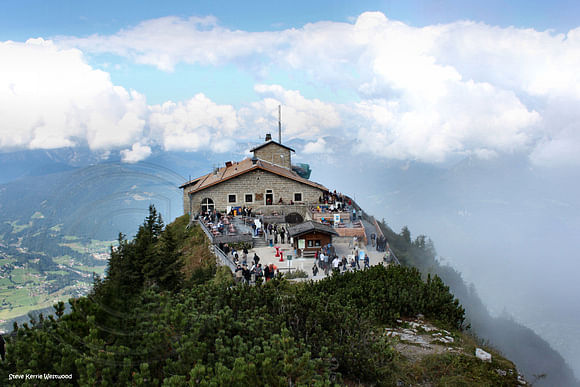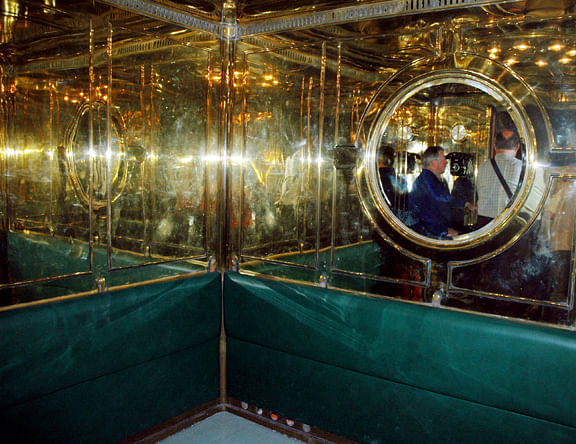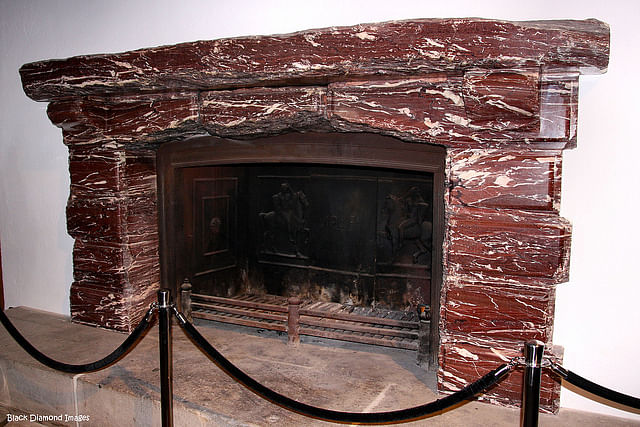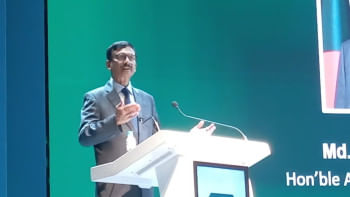The <i>other</i> side of Germany…

‘Believe it or not: Germany’s branding since the post-war years have been such that Hitler and Germany have become two sides of the same coin. Today’s’ Germans may not like to converse much about the 12 year long Nazi rule that almost stamped the country as a global villain , but till to this date, it’s hard to conceal one’s curiosity about the infamous dictator. If you are a WW2 zealot and then have landed in Germany - you are snoopily tempted to enquire about the Fuhrer besides the bygone Nazi era.’
As I declared, my German friend Maria Gabriela Eich reluctantly nodded her head. The last stretch of the connecting mountain road ended in front of the villa we rented at Ramsau in Berchtesgaden. For the two of us it took over 475 kilometers of driving from Rhinestetten to here; from the farthest south-west to the farthest south-east, snaking through the pastoral and picturesque expanses, villages and medieval towns of south Germany.
Berchtesgaden is a mountainside retreat situated in Bavaria, from here Austria is just a stone’s throw. However, our destination is ‘Kehlsteinhaus’ flanking Obersalzberg where the second seat of 3rd Reich - was located. It’s at the foothills of the Kehlstein Mountain in Bavaria.
Perched well over 6000 feet in one of the striking locations of south-east Germany, the Kehlsteinhaus today is a chalet-style restaurant owned by a charitable trust, but with a sinister past.
It’s for the past why I am here today.
For nearly 7 years it served as Adolf Hitler’s mountain retreat and a place for him to entertain foreign dignitaries from far across the globe. Carved in to the rock face, the spectacular mountain eyrie still stands at the summit of the Kehlstein Mountain in the Berchtesgaden Alps but with a different identity.
It’s one of the last modified relics of the Nazi past.To reach Eagle's nest we first had to park our car near the Dokumentation Obersalzberg: a museum exhibiting over 950 documents, photographs, audio clips, films and maps as well as a scale model of the Obersalzberg area showcasing new buildings which were once Nazi establishments. The exhibition covers the two floors of the main building while extending through a tunnel to the bunker. It is near here where Adolf Hitler had his Berghof (Mountain House).
The main museum building replaces the former Nazi Guesthouse, linked through a tunnel to the Nazi bunkers inside the Obersalzberg. it was constructed during the later stages of the war. A tour to 'Eagle's nest' is incomplete without stepping inside the museum. For the reader’s information, the museum has been visited by over two million visitors since it opened in 1999. Probably it’s the only place in Germany where you can get hold of that nostalgic Nazi times. It houses a plethora of information . The bus ride from Obersalzberg to Eagle’s Nest is a roughly half hour journey. The narrow and steep road rises about 700 meters with only one switchback turn which is closed to all other mountain traffic.
It is a one-way road except for one wide spot where the uphill and downhill buses pass. They're evenly timed so the buses leaving the top and bottom arrives exactly the right time. (of course, its German timing which is almost as precise as its engineering) As the bus drops you at the tunnel entrance , leading to Kehlstein Mountain we needed to get our tickets stamped with the time when we expect to return. The long, dark tunnel is lined with rough uncut marbles resembling a cobbled street. It guided us to a golden mirrored elevator which took us up to the 6000 foot summit in less than 15 seconds.
While ascending , an American visitor said , the elevator is the same one used by Hitler and his visitors. The telephone in the elevator carriage is an original one dating back to 1938 besides a clock mounted on top. It once belonged to a U-boat . Both functions perfectly.
Amazingly, now as then , the mountain retreat is powered by electricity with an U-Boat engine generator for emergencies, so that visitors are not blocked in the elevator. The original engine is still on the old location which can still be used as an emergency generator. Two distinct features together : architecture and engineering, echoes of German mastery of the 30’s.Though the Fuehrer was driven through the tunnel, but we like others had to walk.
As we got out of the elevator we stepped in one of the very few historic survivors of the Third Reich: Kehlsteinhaus. In one of history’s weird ironies Martin Bormann's birthday present (on behalf of the Nazi party) to Adolf Hitler on his 50th birthday, is now a cozy restaurant with a spectacular 360 degree view of the Alps. Needless to say it’s the panoramic view that one can expect at its best. Hitler's fascination with the old Germanic legends is reflected in the style and location of the building. Going through the dining room a few steps down takes you to the large, stone-walled room that was once used for conferences and occasional parties by the Nazis. Now it’s used for accommodating additional diners. Inside there are deep-set windows on three sides overlooking the Alps (The Fuehrer’s crony Martin Bormann: no matter how evil, had shown taste in selecting a birthday present for his boss)

Once reached, you can explore most of the rooms once used by Hitler, Eva Braun, Himmler and the rest for entertaining foreign diplomats. It wasn't damaged during the war, so it resembles what it looked like in April of 1945. Though most of the furniture was removed by the allied forces, but the red marble fireplace that Mussolini gave to Hitler is still there. The stone walls and beams in the ceilings are the original ones. Some of the light fixtures are original too. The room that once boasted of being Hitler’s office is now used as kitchen-cum-store for preparing lip smacking Bavarian dishes.
As this writer stepped out of the restaurant towards the souvenir shop outside, the surrounding mist began to clear out. The wall opposite the shop boasted the insignia of the Nazi flying eagle without the Swastika . Looking towards the Lake Königssee at a distance, I murmured to myself – ‘had it not been for Hitler’s mountain retreat there would have been nothing in here.’ Notion of tourism has changed in the 21st century. From Hitler’s Eagle’s nest to Mir Zafar’s grave in Murshidabad; Tito’s nuclear bunker to Stalin’s summer house to Mussolini’s villa – now it’s the dictators’ hideouts which have become tourist attractions.

Why?
Perhaps it’s the hidden charm of dark tourism. It’s the feel of travelling by breaking the norms of regular tourism. Romanticizing one’s self beside a villain of the past. For this writer it’s like a curious mixture of tourism and magic realism. Similar to an attempt for reviving a period that’s been suppressed as ‘prohibited times’. If not then how does Eagle’s nest draw over 250,000 visitors on average every year?
After the war Eagle’s nest was used by the Allies as a military command post untill the late fifties’ before being handed back to the State of Bavaria. A message for the would-be tourists to Eagle’s nest is: before you arrive do some research about Obersalzberg and the Nazis . Eagle’s nest today has out lasted its political and strategic importance.
This mountain retreat , amidst an idyllic setting was intended to lead as well as lead the horrors of those holocaust years......It was the other side of Germany.
Going to Eagle’s nest:
The Eagle′s Nest is closed during winter, usually between November and April.
Located in Germany’s remote south-eastern corner, Eagle’s nest is easily accessible by both road and rail from Munich and Salzburg. The town Berchtesgaden is roughly a two hour drive from Munich Airport, thought the most convenient point of arrival by air is Salzburg’s W. A. Mozart airport which is just half an hour away from Berchtesgaden by car and less than an hour away by train or bus. But getting to the Kehlsteinhaus from Salzburg is easier: From the base in Berchtesgaden, busses take visitors up to the entrance area, approximately 124 metres underneath the Eagle′s Nest.

 For all latest news, follow The Daily Star's Google News channel.
For all latest news, follow The Daily Star's Google News channel. 



Comments